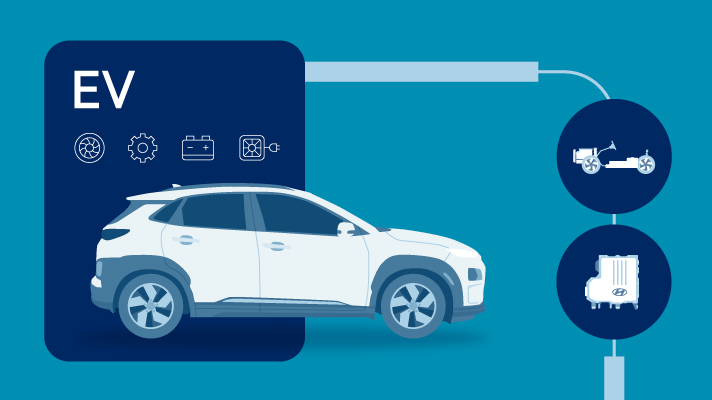Lithium-ion batteries (LIBs) are generally used in most of the electric vehicles these days. All electric vehicles are also referred to as battery electric vehicles. These vehicles generally use an electric motor in place of an internal combustion engine.
Here, the vehicle incorporates a large traction battery pack. The battery pack gives power to the electric motor and needs to be connected to a power outlet. According to the type of electric vehicle, the electric motor supplements a traditional internal combustion machine or is powered up completely by the battery.
The electric motor is powered by a controller and it regulates the amount of power to be used by the driver as per the requirement as he/she puts foot on the accelerator pedal. The electric vehicles take energy from its rechargeable batteries and are recharged by connecting it to the grid.
What are four types of Electric Vehicles?
Battery Electric Vehicles (BEVs)– Powered completely by an Electric Battery-No gasoline engine parts.
Battery Electric vehicles or BEVs employs rechargeable batteries and there is no presence of gasoline engine. The entire energy comes from the battery pack to run the vehicle and is recharged from the grid. These are also called zero emission vehicles because they don’t make any carbon emissions or any other harmful substances that will cause air pollution. Large-scale air pollution occurs by the traditional gasoline-aided vehicles.
Hybrid Electric Vehicles (HEVs)-
The Hybrid Electric Vehicles or HEVs combine a traditional internal combustion engine (ICE), an electric motor and battery pack for the reduction of fuel consumption. HEVs work on a method where the electric motor can drive the vehicle if ICE gets inefficient as it accelerates from a stop. HEVs are more or less similar to normal ICE vehicles as the vehicle riders can only top them up by normal fuels. HEV technology involves the automatic recharging of the battery through a process called regenerative braking. Here, it can activate the electric motor system when the condition is suitable. That means the driver doesn’t have to monitor charge or plug-in to power sources.
Plug-in Hybrid Electric Vehicles (PHEVs)-
In case of the Plug-in Hybrid Electric Vehicles or PHEVs, these vehicles incorporate a gas powered engine and an electric motor to run the vehicle. The entire energy for the battery is generated by regenerative braking. Regenerative braking is a process where it regains the lost energy during the braking to aid gasoline engine at the time of acceleration. In case of the traditional internal combustion machine vehicle, the same braking energy is lost in the form of heat in the rotors and brake pads. The regular HEVs can’t connect to the grid for recharge, nor can be charge with EVgo. The major difference between HEVs and PHEVs is that PHEV has a much larger battery and can be plug-in to the grid for recharging. HEVs run in low speed for 2-3 miles before the starting of their gasoline engine. PHEVs can go anywhere on their natural speed for 30-40 miles before their gasoline engine turns on. If all the electric charge of PHEV gets wiped out, it starts to work like regular HEVs and can travel to few hundred miles with its stored gasoline.
Fuel-cell Electric Vehicles (FCEVs)-
The fuel cell electric vehicles or FCEVs employs a 48-VOLT starter motor, better known as Integrated Starter Generator (ISG) to assist Internal Combustion Engine (ICE). These vehicles are more or less similar to BEVs as these vehicles only use electric energy to run. But storing of the energy is a lot different. FCEV takes the electrical energy from its own charger by a chemical reaction involving hydrogen. It means FCEV doesn’t require charging from power sources and will be filled with hydrogen.

